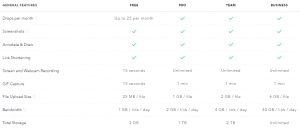Time to revisit your target account list and explore new channels to tighten alignment between sales and marketing.

The continued success of Account-Based Marketing depends not only deploying on the right technology, but also having the right processes and mindset toward adoption and growth in your organization. As marketers get deep into planning for 2019, now is a great time to address fundamental considerations for how you can best build and grow your ABM practice next year.
Here are five considerations to plan for the most effective ABM program.
1. Revisit your target account list
While many companies have a target account list, it is often created by sales, passed to marketing and never subsequently updated. The list is only valuable so long as it has the right accounts with the most potential for your company. In some cases, that means the list will be fluid. If competitors jump on your heels, specific accounts may rise up the pyramid to avoid losses for example. Or if you’re trying to break into a new vertical space, winning a couple of high-profile logos becomes important.
Here are a few tips for how you can revisit and rebuild your target account list so it best serves your ABM programs in 2019:
- Evaluate current customers – Evaluate your current customer base and create a lookalike model
- Leverage named accounts – Including verticals and strategic accounts
- Use account identification technology – Determine the high-value accounts most likely to buy and best individuals within those accounts
Then, regularly revisit it. Businesses should be looking at data insights to inform the ideal profile for your buyers (industry, revenue range, employee range, etc.).
2. Define the tiers for your target account list
Three distinct ABM tiers exist for marketers:
- One-to-One – A dedicated, senior-level marketer works in full partnership with the account team and creates highly customized marketing programs for “markets of one.”
- One-to-Few – Takes the research-based principles of one-to-one and applies them to larger groups of accounts. This approach typically brings together clusters of five to 15 accounts with similar business issues, often in the same industry.
- One-to-Many – Emphasizes personalization at scale. This approach typically addresses a strategically curated target account list of several hundred or more named accounts and can only be achieved with the right technology.
As you look to evolve ABM in your organization in 2019, consider that the highest performing companies choose a blended approach of these practices. Sticking to just one ABM practice stops you from achieving the right balance between breadth and depth. For example, true one-to-one ABM requires a high investment in resources so usually can be applied only to a small percentage of a company’s target accounts, stopping you from achieving breadth. However, it is a necessary practice to achieve the depth of customization with your company’s handful of critical accounts that will help to meet your revenue, reputational or relationship goals. A mix of practices becomes essential to achieving the right balance.
As you plan for 2019, think about what corporate objectives you want ABM to help solve. Then consider how different types of ABM will help address these – along with the headcount and budgetary resources you can reasonably ask for – to determine the right mix of practices for your organization.
3. Explore new channels
Most marketers start their ABM journey with a few go-to channels to get those right and prove initial success before expanding to other marketing channels. It’s worth keeping in mind as you continue on the path, however, that all marketing can be adjusted to be account-based. In my experience, there are a few channels that less frequently have ABM applied to them but that merit from it.
Advertising is the perfect example. Display advertising is often thought of as a top-of-the-funnel tactic, focused on driving awareness and generating a large number of leads. But when you apply an account-based approach to advertising, campaigns became more strategic and narrowed down to target a specific set of accounts – making a bigger impact and reducing spending.
If this sounds interesting, consider planning to apply ABM to advertising in 2019 by purchasing ads just for your target account segments with personalized messaging. Measure whether each campaign resulted in a lift to your website and engagement from those key accounts. Consider measuring “cost per engaged account” to determine the effectiveness of your ABM ad budget.
4. Tighten alignment between sales and marketing
You can do all the planning in the world but if the success of the program rests on the marketing team alone, your ABM program will never achieve what you envision for it in 2019. While marketing may be the key driver of ABM, marketing, sales and even operations need to be working together at all stages of the funnel. During 2019 planning, it’s a good time to reset and ensure those functions are strategically aligned based on corporate objectives, especially given new stakeholders may have entered the mix and expectations may have shifted.
Consider processes for ensuring alignment such as a funnel working group – a weekly meeting in which sales and marketing leaders meet to review pipeline health. Set up a meeting with this group to initially understand everyone’s top pain points and what they are trying to achieve and then align on how ABM can help. Following that, use the meetings to periodically re-assess performance and results.
5. Measure success
In 2019, to prove the success of your ABM program and get the internal buy-in to grow it, you’ll need to tie results back to business outcomes. The one mistake I see marketers make is using quantity-based channel metrics to measure what’s a quality-focused initiative.
Keep quantity-focused metrics for broader marketing initiatives and then for ABM programs, select quality-focused metrics that show business outcomes, including win/loss rates, funnel velocity and customer lifetime value (LTV), to tie ABM back to a tangible difference to the business.
Finally, once you’ve proven ABM success, make sure to communicate it. This could take the form of a central dashboard that’s shared across marketing, sales and operations to communicate overall ROI of your campaigns, maintain alignment and spot areas of opportunity.
Conclusion
Success rests on a solid strategy and then revisiting that strategy regularly. Including your ABM strategy as a key part of the 2019 marketing planning process will allow you to look into what’s working and what’s needed to improve your program and increase your marketing efficiency next year.
Opinions expressed in this article are those of the guest author and not necessarily Marketing Land. Staff authors are listed here.
Marketing Land – Internet Marketing News, Strategies & Tips
(59)
Report Post








